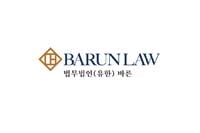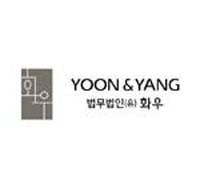
South Korea


Ashurst

Bae, Kim & Lee LLC

Baker McKenzie & KL Partners Joint Venture Law Firm

Barun Law

Choi & Kim

Clifford Chance

Dentons Lee

DR & AJU LLC

Drew & Napier LLC

Jipyong LLC

K&L Gates Straits Law LLC

Kim & Chang

Kwon & Co

LAB PARTNERS

Latham & Watkins LLP

Lee & Ko

Lee International IP & Law

Mayer Brown

Milbank

Peter & Kim

Sechang & Co.

Shin & Kim

Simpson Thacher & Bartlett Hong Kong

White & Case LLP

Yoon & Lee

Yoon & Yang LLC

Yulchon
Firms in the Spotlight

Barun Law
At Barun Law LLC, our clients come first. With a team of passionate and seasoned professionals, we deliver optimal legal solutions tailored to your needs. Renowned for our litigation expertise, we pro

Lee & Ko
Lee & Ko is a premier full-service law firm with more than 880 professionals dedicated to providing expertise across all legal sectors. Since its inception in 1977, Lee & Ko has represented a

DR & AJU LLC
Established through a merger between law firms Daeryook and AJU in 2009, DR & AJU LLC is a leading full-service law firm in South Korea. Based on strong fundamentals created by the collective expe

Shin & Kim
Now in its 40th year, Shin & Kim is one of the largest and highly regarded law firms in Korea.
The breadth and depth of experience offered by over 600 professionals (including Korean
News & Developments
ViewAntitrust and competition
Key Antitrust and Competition Policy Directions of New Administration
On June 4, 2025, President Lee Jae-Myung commenced his five-year term as the 21st President of the Republic of Korea. During his inaugural speech, President Lee emphasized his commitment to building a market economy ecosystem based on fairness and shared prosperity.
He stated that “[f]air growth based on shared opportunities and outcomes will open doors to a better world,” and that Korea must “move toward a fair society of balanced development and fair growth strategies” to “create an industrial ecosystem where companies of all sizes collaborate organically, and transition into a fair society free of privileged status or preferential treatment.” In line with these goals, the new administration is set to implement significant political and economic policy reforms that will impact businesses operating in Korea.
The President’s National Policy Planning Committee unveiled the new administration’s five-year roadmap on August 13, and the administration’s 123 national policy tasks were officially approved at a Cabinet meeting on September 16. These policies highlight “establishing a fair economy of cooperation and shared prosperity” as a core strategy to achieve the administration’s key objectives, for which specific tasks include (i) creating a fair market order, (ii) ensuring consumer sovereignty and eradicating unfair practices, and (iii) combating technology theft and creating a business environment of shared prosperity.
Creation of Fair Market Order
The new administration has outlined the following specific initiatives to build a fair market order.
Create a fair platform ecosystem: The new administration plans to establish an online platform regulatory system to protect consumers and businesses and eradicate unfair practices by (i) enhancing transparency throughout the transaction process – covering contract formation, modifications and execution, (ii) reducing the burden of fees on vendors and strengthening their bargaining power through the right to form a collective, and (iii) preventing misappropriation of transaction proceeds by requiring compliance with settlement deadlines and separate management of payments.
Strengthen protections for the economically underprivileged: Efforts will focus on boosting the bargaining power of small and medium-sized enterprises (“SMEs”) and small business owners against stronger counterparts – such as franchisors and prime contractors – and facilitating the opening and closing of businesses through measures including (i) granting franchisees the right to collective bargaining and enabling distributors, suppliers and vendors to form collectives, and (ii) implementing a franchise disclosure system to provide timely information to prospective franchisees and grant franchisees termination rights to exit agreements without excessive penalties when business conditions deteriorate due to unforeseen changes in commercial environments.
Strengthen monitoring of unfair internal transactions: The new administration plans to tighten monitoring of unfair internal transactions by (i) discouraging overlapping listings within the same business group under the holding company system, (ii) preventing circumvention of regulations on inter-affiliate transactions through treasury shares that allow the owner family to make undue profits, and (iii) adjusting administrative fines that are proportionate to the unfair gains to ensure strict enforcement.
Promote a fair procurement market: To ensure fairness in public procurement, the administration plans to introduce ex officio investigations and administrative fines for refusal to cooperate or non-compliance with the investigations, thereby strengthening oversight of unfair acts by institutions involved in public procurement.
Ensure Consumer Sovereignty and Eradicate Unfair Practices
The following implementation tasks aim to protect consumer rights and interests, promptly prevent unfair and illegal acts, and expand effective remedies for damages in areas closely related to daily life.
Strengthen consumers’ rights and interests across all age groups: The new administration plans to enhance consumer protection by: (i) requiring disclosure of wedding service prices (for young adults), (ii) mandating gyms to disclose whether they have guarantee insurance for middle-aged consumers, and (iii) improving the financial stability of funeral service providers to protect the elderly.
Expand civil remedies and enforcement: To better deter unfair civil practices and improve damage relief, the administration plans to (i) broaden the scope of unfair practices for which the private sector can file claims directly in court – without having to go through the Korea Fair Trade Commission (the “KFTC”) – extending beyond the Monopoly Regulation and Fair Trade Act (the “MRFTA”) to include unfair practices under the Fair Subcontracting Transactions Act, Fair Franchise Transactions Act, and Fair Distribution Transactions Act, (ii) establish a fund to compensate consumers and SMEs harmed by unfair trade practices and support their rights, (iii) eliminate the lawsuit permit system and introduce the right to seek preventive injunctions to encourage consumer class actions, and (iv) create a system where courts can order the opposing party and the KFTC to submit evidence related to damages.
Strengthen the dispute mediation and execution system: The new administration plans to pursue the enactment of the Fair Trade Dispute Mediation Act, which would consolidate dispute mediation procedures that are currently dispersed across individual laws, introduce a simplified mediation process and an appraisal advisory system, and expand collective mediation. The new administration also plans to update the dispute mediation system to provide legal grounds to provide support for litigation for disputes that failed to reach a mediation. In addition, it introduced plans for a new legal basis for requiring local governments to take measures and reply when the Korea Consumer Agency notifies a confirmed violation that was detected during the provision of damage relief, and allow all consumers to receive damage relief en masse even if they did not apply for it.
Eradicate Technology Theft and Create a Business Environment of Shared Prosperity
The following implementation tasks were proposed with the objective of establishing a fair market order and creating an environment where SMEs can grow by promptly remedying damages and resolving disputes arising from unfair practices such as technology theft.
Strengthen technology protection system: The new administration plans to enhance protection against technology theft by imposing stricter penalties, alleviating the burden of proof during the litigation process and ensuring full compensation for damages. Specifically, these measures will include (i) the introduction of a Korean discovery system and enabling the court to order submission of materials, and (ii) an update of the calculation method of actual damages, which forms the basis for calculating the punitive compensation amount.
Institutionalize the damages relief system: The new administration plans to (i) create a damages relief fund jointly operated by the KFTC and the Ministry of SMEs and Startups, (ii) establish an integrated support system dedicated to mediating disputes among SMEs and providing damage relief to SMEs, and (iii) establish a preventive system.
Create a win-win environment: To close regulatory gaps, the administration plans to expand the scope of the supply price linkage system to energy costs, stabilize subcontract price payments, introduce a win-win financial index, and enhance the bargaining power of SMEs by granting SME cooperatives the right to collective bargaining.
Establish a fair trade environment on platforms: The new administration plans to foster a culture of shared prosperity on online platforms and support the revitalization of public delivery apps by institutionalizing practices that promote win-win cooperation, including conducting assessments of platform growth, carrying out fact-finding surveys and operating a win-win consultative body between platforms and business operators.
Implications
The new administration is expected to be more active in regulating abusive behavior issues (i.e., abusive conduct arising from parties with a systematically unequal bargaining power) and overseeing large business groups. It will also enhance protection of economically underprivileged groups and consumers by updating and enforcing relevant laws and regulations for protecting and providing damage relief.
Accordingly, companies will need to adopt proactive risk management measures and take into consideration relevant developments, not only to help ensure compliance with evolving regulations but also to identify new business opportunities.
Authors
Youngjin JUNG (View Profile)
Gene-Oh (Gene) KIM (View Profile)
Kyung Min KOH (View Profile)
Kee Hong CHUN (View Profile)
https://www.kimchang.com/en/insights/detail.kc?sch_section=4&idx=33137
Kim & Chang - December 11 2025
Labour and employment
“Yellow Envelope Act” Passes National Assembly Plenary Session
On August 24, 2025, the National Assembly passed the amendment to the Trade Union and Labor Relations Adjustment Act (the “TULRAA”), commonly known as the “Yellow Envelope Act.”
The amendment was promulgated on September 9, 2025 and will become effective on March 10, 2026, six months from the date of promulgation. The key aspects of the amendment are as follows.
Expansion of Scope of “Employer” Under TULRAA
The proposed amendment recognizes an entity as an “employer” under the TULRAA if it has substantial and specific control over working conditions, even if it is not the direct employer under an employment contract. Accordingly, if a contracting entity can substantially and specifically control or determine the working conditions of a subcontractor’s employees, it may be deemed an employer and be obligated to engage in collective bargaining with the subcontractor’s union.
Expansion of Scope of “Union Membership” Under TULRAA
Currently, the TULRAA stipulates that an organization is not considered a trade union if it allows non-employees to join. The proposed amendment deletes this provision, making it possible for individuals who are not “employees” as defined by the TULRAA to join a trade union.
Expansion of Scope of “Industrial Dispute” Under TULRAA
The previous versions of this bill proposed deleting the word “determination,” which would have expanded the scope of industrial disputes to include not only disputes of interest (matters concerning the determination of working conditions), but also disputes of right (matters concerning the implementation of determined conditions). However, the current amendment retains the word “determination” but expands the scope of industrial disputes to include matters related to the “status of workers,” “business management decisions that affect working conditions,” and “violations of a collective bargaining agreement by the employer.”
Notably, by explicitly including “business management decisions that affect working conditions” as a subject of industrial disputes, the amendment makes it likely that union demands for collective bargaining or industrial action over management decisions – such as mergers, spin-offs, business transfers, factory relocations or restructuring that impact employees – will be regarded as legitimate actions.
Limitation on Damages Claims Against Unions
While the current TULRAA grants immunity from liability for damages resulting from legitimate collective bargaining and industrial actions, the amendment broadens this protection to cover damages arising from “other activities of the trade union” as well. It also clarifies that a union or worker is not liable for damages caused to an employer when acting in defense against the employer’s illegal acts. In addition, the amendment outlines specific factors that courts must consider when determining the extent of individual liability for illegal acts committed by the union and/or workers and provides a framework for such union and/or workers to request a reduction in damages.
The TULRAA encompasses major amendments, such as the (i) expansion of the scope of an “employer,” (ii) expansion of the scope of “union membership,” (iii) expansion of the scope of industrial disputes, and (iv) limitation on damages claims, and it is likely to have a significant impact on existing labor-management relations. Accordingly, companies will need to prepare for changes in labor-management relations with the implementation of the TULRAA.
Please click on the following link to view the full version of this newsletter (Link).
Authors
Hyun Jae PARK (View Profile)
Shin Hyeong PARK (View Profile)
https://www.kimchang.com/en/insights/detail.kc?sch_section=4&idx=33102
Kim & Chang - December 11 2025
Press Releases
Yoon & Yang Bolsters Top-Tier M&A Lineup with Hire of Leading PE/VC Dealmakers Young Ju Kim and Min Joo Kim
September 30, 2025
Yoon & Yang LLC (“Yoon & Yang”) announced that it has upgraded a full lineup for M&A practice by recruiting Young Ju Kim and Min Joo Kim from LAB Partners in Korea, both recognized for their strong expertise in private equity (PE) and venture capital (VC) transactions. With the addition of these two partners, it has established a comprehensive lineup to serve all players in the M&A market, including large corporations, cross-border deals, PE, and mid-cap companies.
Yoon & Yang is now considered to have built a top-tier team that covers all areas of M&A, capital markets, and corporate advisory, building on the recent hire such as managing partner Hee Woong Yoon, and other key partners, Jin Kook Lee, Myong-Hyon (Brandon) Ryu, and So Yeon Yoon. In addition to the firm’s recent strengthening of cross-border and large-cap M&A capabilities, this new recruitment further expands its capabilities to include PEF-led M&A and mid-cap M&A advisory, significantly broadening its client base in the M&A sector.
Most importantly, Yoon & Yang’s recent recruitment of leading attorneys from LAB Partners, who were both renowned for their exceptional expertise in PE, VC, and mid-cap M&A, is highly significant as it will certainly establish itself as a prominent player in the PE and VC markets.
Young Ju Kim, a partner, has established himself as a leading strategist in PE-centric M&A deals. A graduate of Korea University (LL.B., LL.M.) and a Korea qualified lawyer, Mr. Kim began his legal career at Shin & Kim LLC in 2009, where he distinguished himself in all areas of corporate and finance advisory, including PE and VC, capital markets regulation, acquisition finance, and structured finance. He later joined KL Partners and subsequently moved to LAB Partners as a founding member and managing partner in 2018, playing a crucial role in its rise as a premier M&A firm. In particular, Mr. Kim has been central to major domestic and international PE and VC transactions, including SGPE’s acquisition of Korea Special Gases, Keistone Partners’ acquisition of Se-Ah Mechanics, Highland PE’s acquisition of Orion Technology, and Orchestra PE’s acquisition of KFC Korea. Mr. Kim also advised on the landmark transaction involving the sale of Kyungjin Textile and Dongjin Textile to MBK Partners for KRW 790 billion.
Furthermore, he enhanced his expertise in handling cross-border deals while working at the Hong Kong office of the U.S. law firm Latham & Watkins, which led to his participation in numerous inbound deals representing foreign investors. Since 2016, Mr. Kim has been continuously recognized as a leading lawyer in M&A and PE by IFLR1000, underscoring his global market reputation and expertise.
Min Joo Kim, a partner who was admitted to the Korean bar in 2017, is an all-around player who covers entire process of M&A and corporate advisory. She graduated from Seoul National University (LL.B.) and from Ewha Law School (J.D.). Under the guidance of Mr. Kim at LAB Partners, Ms. Kim has handled a wide range of M&A, corporate governance, shareholder disputes, and corporate finance matters across various industries.
Over the past eight years, Ms. Kim has earned recognition for her ability to oversee and handle every stage of mid-cap transactions—from deal structuring, fund formation, due diligence, and regulatory review to closing. In particular, her notable successes include leading SBI Holdings’ investment in Kyobo Life Insurance, Tenet PE’s acquisition of Powermax, Highland PE’s acquisition of Orion Technology, and SK Energy’s acquisition of GoodsFlow. She also demonstrated exceptional expertise in cross-border M&A by meticulously reviewing regulatory and licensing issues with the government of Slovakia, Poland, and Hungary during IS Dongseo’s acquisition of Slovakia’s BTS Technology. She led the due diligence of four European subsidiaries in collaboration with local counsels.
The addition of the two partners is expected to significantly enhance Yoon & Yang’s capabilities in advising high-profile PE/VC deals and mid-cap transactions, while also reinforcing its competitiveness in both domestic and cross-border M&A.
Mr. Myung Soo Lee, the managing partner of Yoon & Yang, commented, “Yoon & Yang has continuously invested in talent with the strategic mindset and deep expertise to deal with complex M&A structures and meet diverse investor needs. With the addition of these two highly respected partners, Yoon & Yang has established a full-spectrum service capable of covering M&A, PE/VC-driven transactions, and capital markets advisory, enabling us to provide clients with optimized, client-focused solutions.”
For more information, please contact:
Mr. Jae Hyuk Yang
Senior Marketing/Communications Manager
Yoon & Yang LLC
Tel: (82-2) 6003-7229
Email: [email protected]
Yoon & Yang LLC - November 14 2025
Press Releases
Yoon & Yang Strengthens International Finance Practice with Addition of Veteran Attorneys: Young-Joon Cho and Eun Sik Shin
Yoon & Yang LLC (“Yoon & Yang”) announced that it has welcomed experts with extensive experience in global finance market, Partner Young-Joon Cho and Senior Foreign Attorney Eun Sik Shin, as new Partners. Both attorneys bring outstanding credentials and extensive transactional experience in cross-border transactions, international finance, offshore finance, structured finance, and project finance.
With these high-profile appointments, Yoon & Yang further strengthens its competitiveness and expertise across a full spectrum of global financial transactions, including offshore and cross-border finance, acquisition finance, structured and asset-backed finance, project finance, and shipping and aviation finance.
Partner Young-Joon Cho: A Leading Finance and International Transactions Expert with 30 Years of Experience
Partner Young-Joon Cho (admitted to Korean bar in 1990) is recognized as a leading authority in finance and offshore transactions with nearly 30 years of experience. A graduate of Seoul National University School of Law, Mr. Cho earned his LL.M. from Columbia Law School in 2001 and was admitted to the New York State Bar in 2003. He began his international finance practice at Skadden, Arps, Slate, Meagher & Flom LLP (New York), engaging in a wide array of international finance and capital markets transactions.
From 1997, Mr. Cho led complex cross-border financial transactions as a partner at another Korean major law firm, Bae, Kim & Lee, successfully advising on over 1,500 cross-border loan transactions in over 25 jurisdictions. He has played a leading role in a broad spectrum of international financial transactions, advising policy financial institutions—including The Korea Development Bank—major commercial banks, securities firms, and global financial institutions.
He also possesses deep experience in global financial regulatory matters, including the U.S. Bank Holding Company Act (BHC Act), Financial Holding Companies Act (FHC Act), and Federal Reserve Regulation Y. He has advised a broad array of Korean policy financial institutions, major commercial banks, securities companies, and global financial institutions on complex international finance and regulatory matters.
Mr. Cho has been recognized repeatedly as a 'Leading Lawyer' by international legal directories such as Chambers Global, Chambers Asia-Pacific, and IFLR1000, underscoring his expertise and influence in the global finance industry.
Senior Foreign Attorney Eun Sik Shin: International and Offshore Finance Specialist
Senior Foreign Attorney Eun Sik Shin (admitted to the Quebec Bar) is an accomplished expert in offshore finance, structured finance, asset-backed lending, and project finance, with more than 27 years of hands-on experience. Starting her career at Kim Shin & Yu Law Offices in 1998, she spent over 25 years at Bae, Kim & Lee LLC, where she played an instrumental role in a wide range of international finance transactions, including offshore lending, issuance of foreign currency-denominated bonds, and ship finance.
Ms. Shin holds an LL.B. from Laval University and from the University of Western Ontario, completed her legal training at Ecole du Barreau du Quebec, and is a member of the Quebec Bar (since 1997).
Driving Synergy in in Financial Transactions and International Finance Practices
With the addition of Mr. Cho and Ms. Shin, Yoon & Yang further bolsters its capabilities in cross-border financial transactions. In particular, the firm is prepared to deliver proactive and strategic counsel on global AML matters, multi-jurisdiction regulatory compliance, and complex collaboration with global investment banking teams, offering clients best-in-class support throughout all facets of international finance.
Managing Partner Myung Soo Lee commented, “As the globalization of the financial industry accelerates, mastery of complex capital structures and regulatory environments is more critical than ever. The addition of these two outstanding experts will elevate Yoon & Yang’s capacity to provide comprehensive, global finance advisory services, particularly in international capital-raising.”
For more information, please contact:
Mr. Jae Hyuk Yang
Senior Marketing/Communications Manager
Yoon & Yang LLC
Tel: (82-2) 6003-7229
Email: [email protected]
Yoon & Yang LLC - November 14 2025